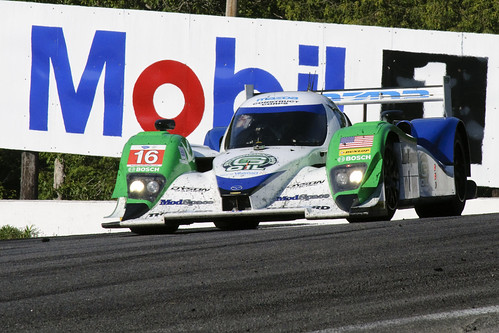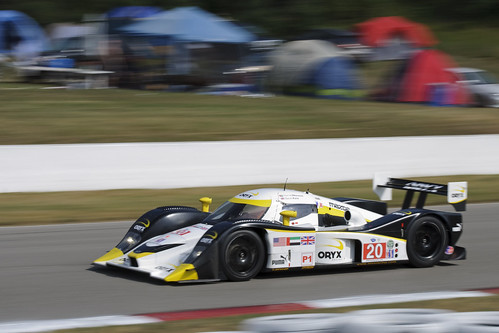One nice aspect of living (virtually) at Occam’s Typewriter is the diversity of authors. Though many (most? all?) have backgrounds present employment in science, the variety of topics in any given week provides for some fun reading. But there are certainly some common threads, not least because everyone here reads everyone else’s posts. The cross-pollination of discussions and topics is, at times, astounding in its energy.
One hot topic, as many of you know, is career paths, particularly given uncertain times for science funding in many (most? all?) of the jurisdictions in which we (physically) live. Erika, for example, just wrote a nice piece as a reminder that industry is an alternative to academia. Sylvia’s recent discussion of career options for post-docs is a good read too, as are any number of Athene’s posts, often focusing on gender inequality. And then there are the rest of the Occam’s Typewriter crew, often writing about careers, the interplay with “real” life, and future options. Try Jenny, or Richard, or Steve for a start. And when you’re done there, toddle on over to Stephen’s blog and watch his excellent film, I’m a Scientist. There’s lots more discussion of career paths, and the inevitable roots and rocks that you can trip over, in the other Occam’s Typewriter blogs too.
All of which is a roundabout way of getting to this, an example of a science career that is absolutely tailor-made for me to shoehorn together three of my favourite things into one gloriously amalgamated homonculous homonculus conglomeration of a post: motorsports, photography, and science. Via Twitter, I was alerted to a nice article in the New York Times’ Wheels blog, beautifully titled Johns Hopkins Student Applies Dark Energy to the Black Art of Racing.

Finally, an excuse to post a photo of a race car.
It seems that an enterprising Johns Hopkins student, one Dillon Brout, has spent the last season employed by one of my favourite endurance racing teams, Dyson Racing of the American Le Mans Series. Mr. Brout, the article goes on to state, joined his skills in analysis of complex data sets with a love of motorsport, helping the Dyson crew to secure the top-level Le Mans Prototype 1 (LMP1) series championship for 2011. Now, you could perhaps argue unfair advantage, since Brout’s training came from arguably one of the best possible places for making sense of disparate and complicated streams of data: the lab of Dr. Adam Riess, who just recently picked up a Nobel Prize “for the discovery of the accelerating expansion of the Universe through observations of distant supernovae”.
So how does this relate to racing? Well, race cars undergo all kinds of forces and stresses, and the best teams collect reams of real-time data from sensors all over the car – in the engine, measuring stresses on suspension components, monitoring tire temperature and pressure, fluid levels, electrical systems, fuel consumption – dozens of potentially important indicators of performance. Track position and adherence to the racing “line” around the track are logged. In some forms of racing, driver biometrics (heart rate, for example) are also carefully examined. These data and many more are collected on the fly, and are also written to memory cards that in long endurance races are swapped out during pit stops, so that the race engineer and other team members can get busy with analysis as the car heads back out on to the track. Clearly, it’s not all about throwing some fuel in, banging some new tires on, and driving like the wind. Racing these days is incredibly high-tech, particularly in the LMP1 class, where cars contain almost voodoo levels of proprietary technology. The Dyson Lola coupe pictured above, for example, runs a custom-built 2.0 litre turbocharged Mazda engine, running on isobutanol – a fuel that has some promise as a more environmentally friendly alternative to corn-distilled ethanol and petroleum products. Building such a thing isn’t easy, and getting it to run at full bore for two, three, six, twelve, or even twenty-four hours is distinctly non-trivial.

Even worse, he had to deal with the second team car as well.
So that’s where a smart cookie like Dillon Brout comes in, bringing some serious data-bashing acumen to the table. It’s about as alternative a career for an astrophysics researcher as I can think of, but I can imagine that should he wish to pursue it, the big players in the racing world may be very interested indeed in this young man.

Great photos! There was a former colleague of mine who loved auto-racing, and I used to get on his nerves by telling him that it’s a complete waste of fossil fuels and unnecessary cause of pollution. Funny, though, he never used the custom-built 2.0 litre turbocharged Mazda engine running on isobutanol as a rebuttal.
Thanks Steve. This is a long-standing argument. It is true, however, that winning endurance races is as much about fuel efficiency as anything else, which is achieved through aerodynamics (straight-line resistance and cornering downforce for grip, allowing greater momentum and fewer losses in efficiency due to deceleration and acceleration), rolling resistance (tire compounds and wear), and of course the powerplant (primary fuel efficiency, fuel choice, etc.). It’s easy to make the argument that racing has improved many aspects of efficiency as well as vehicle safety (windshield wipers, fuel injection and I believe radial tires were all innovations from endurance racing, as examples).
The con side, of course, is exactly what you stated – by its very nature, going fast is wasteful of just about everything involved (fuel, tire rubber, fresh air, and let’s not forget noise pollution too).
The American Le Mans Series has for a number of years espoused “green racing” and has worked hard with sponsor Michelin to promote new fuel choices (E10 and E85 ethanol/gas, cellulosic ethanol, bio-butanol), new oils (G-oil, made essentially from beef rendering byproducts as I recall), and fuel efficiency. Some, however, would argue that this is more a marketing ploy than de facto environmental friendliness, but at least it has the optics of going in the right direction.
All things considered though, bicycle racing is kinder to the environment. 😉
Given your rather erudite explanations, my former colleague might have actually convinced me had he made those points! But he didn’t…
Cheers.
@ ricardipus – Did you see the episode of Top Gear in which Jeremy “My Actual Anus” Clarkson test-drives the Lotus T125 F1-like car? I had no idea that such cars have to be driven at particular speeds for the tires to be hot enough and to be controllable around curves. Sounded terrifying, akin to playing high-goal polo in Palm Beach. If you go too slow (i.e. a rate that seems reasonable), you will crash and die.
On a side note, a local radio host of a world music program recently referred to Top Gear as “that deplorable TV program.” The nerve!
Haven’t seen that one, but I have seen one with Richard “the small guy” Hammond driving an honest-to-goodness, reasonably modern F1 car, with similar results. He managed to get it to full throttle for something like 0.7 seconds. And he also had the issue of cold tires (no handling) and brakes (no, er, braking). Terrifying.
The Lola coupes shown above are a bit more forgiving apparently, but not much. Chris Dyson, one of the drivers of the green #16, managed to stuff it backwards into the tire barrier one year. Cold tires and poor choice of cornering line and hey presto! a crash.
‘homonculous’ – shurely shome mishtake.
I think I’ll stick with my old Volvo.
It would appear that I have done violence to both the spelling AND meaning of “homonculus”. I should have used the word “blob” instead.
Volvos are good. They’re even better with the Volvo engine replaced by the flat-12 out of a Ferrari 512 Berlinetta Boxer. Possibly.
My Volvo, Caroline, is one of the old boxy 850s, before they went cheap and downmarket by shaving the corners off. She has a five-cylinder, 2500cc engine that ticks over nicely at 60mph in the middle of the road, to the fury of other road users – who are amazed that if I wanted to, I could flip over to the ‘sport’ box and vroom off with an acceleration that could pin back the ears of an aardvark with rigour mortis.
Although I’d suggest this one:
http://www.flickr.com/photos/ricardipus/3543977762/